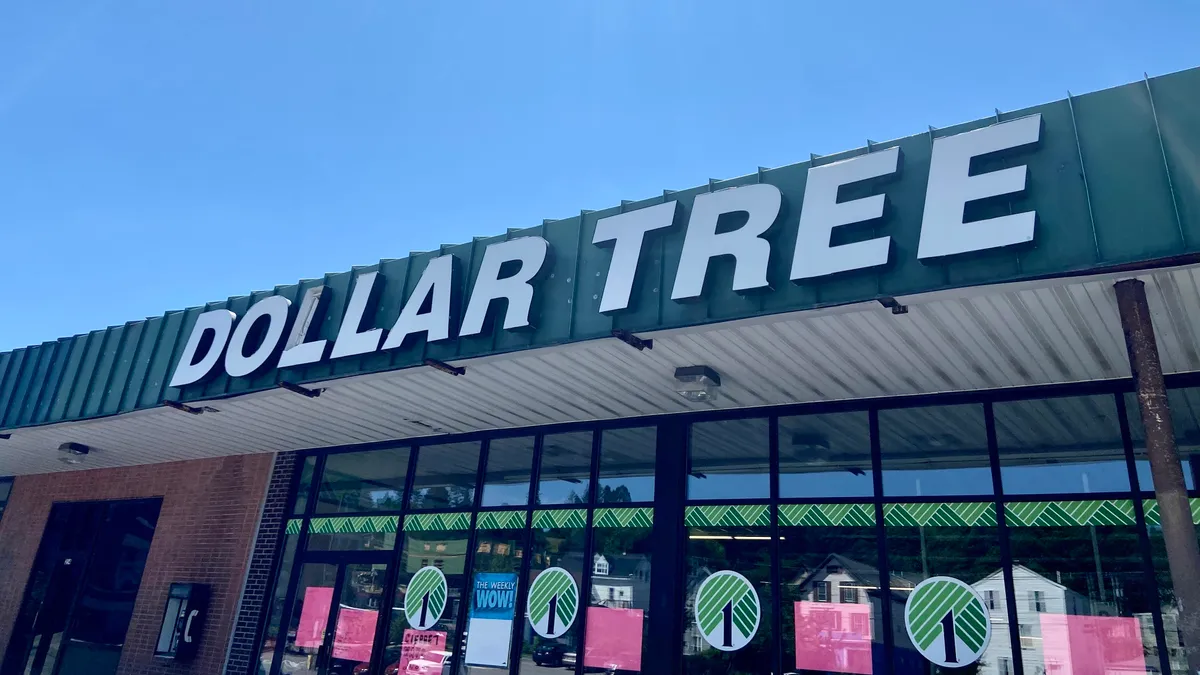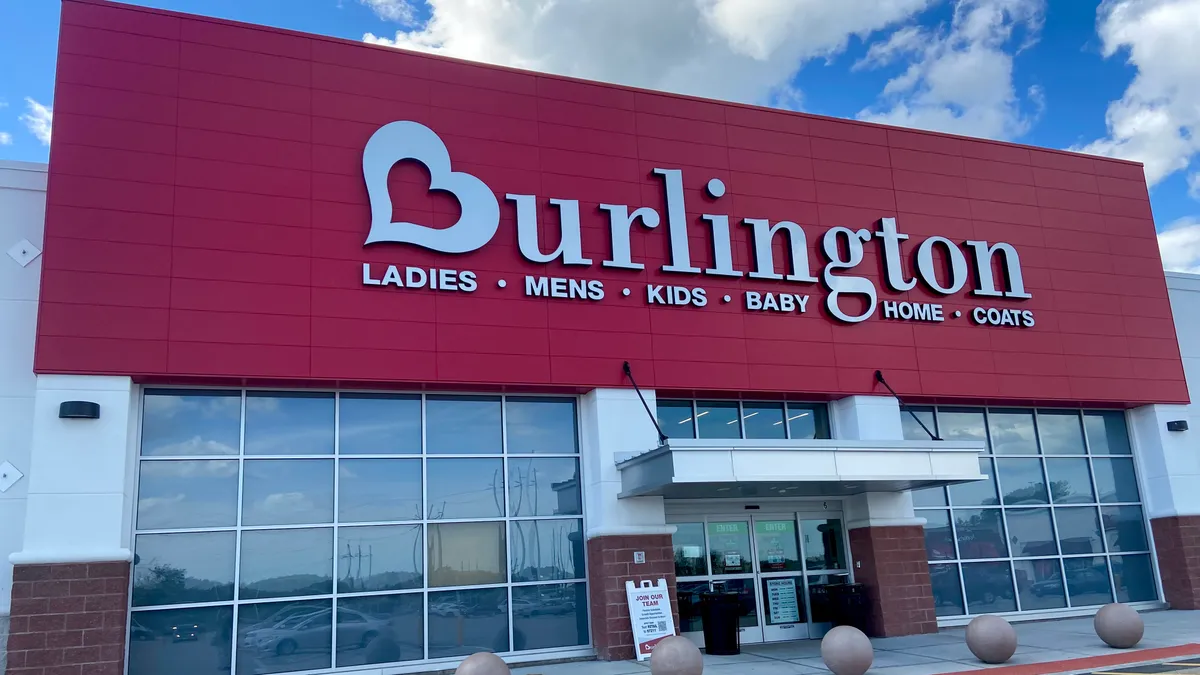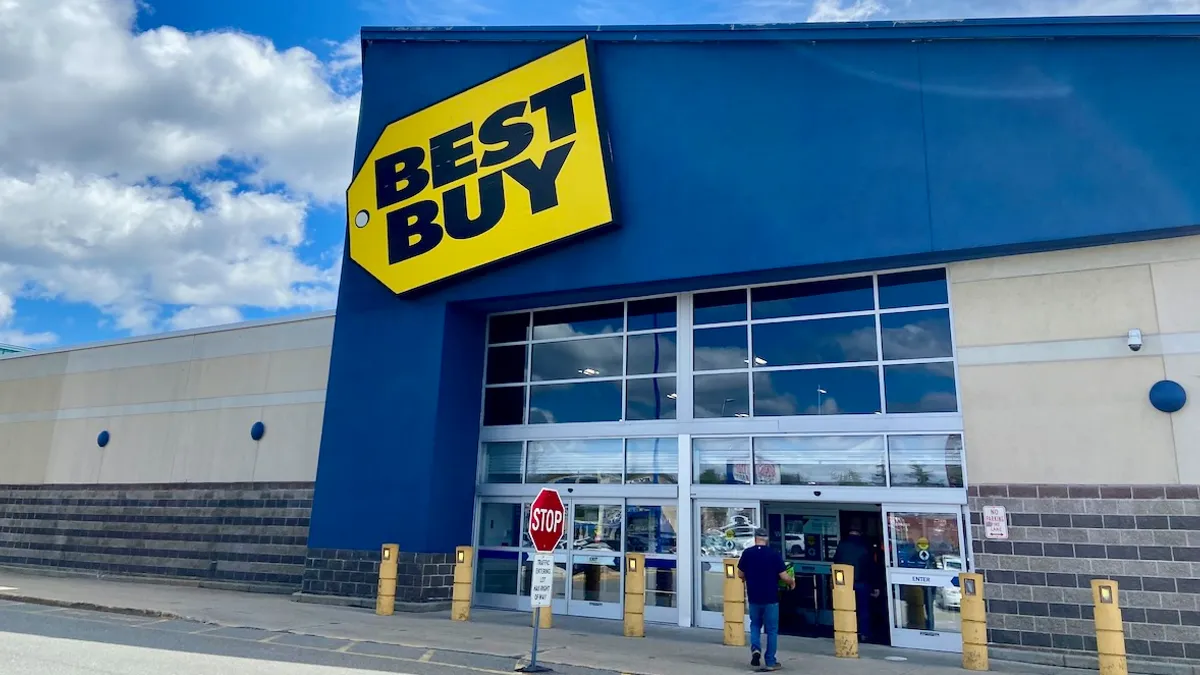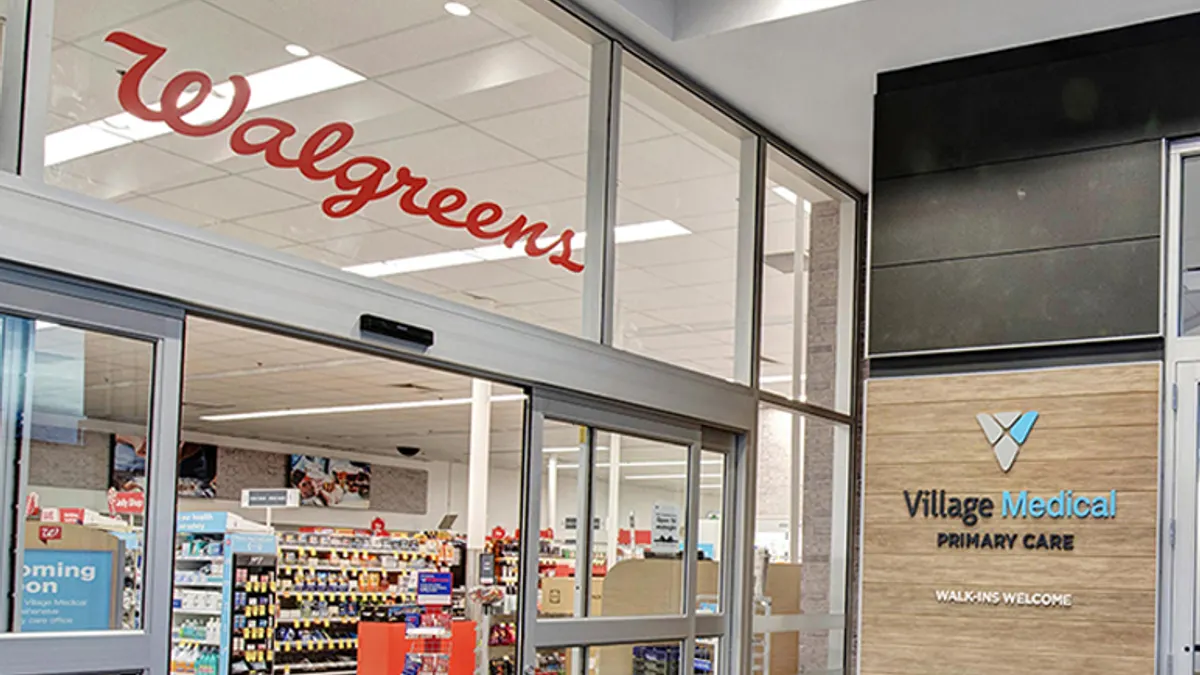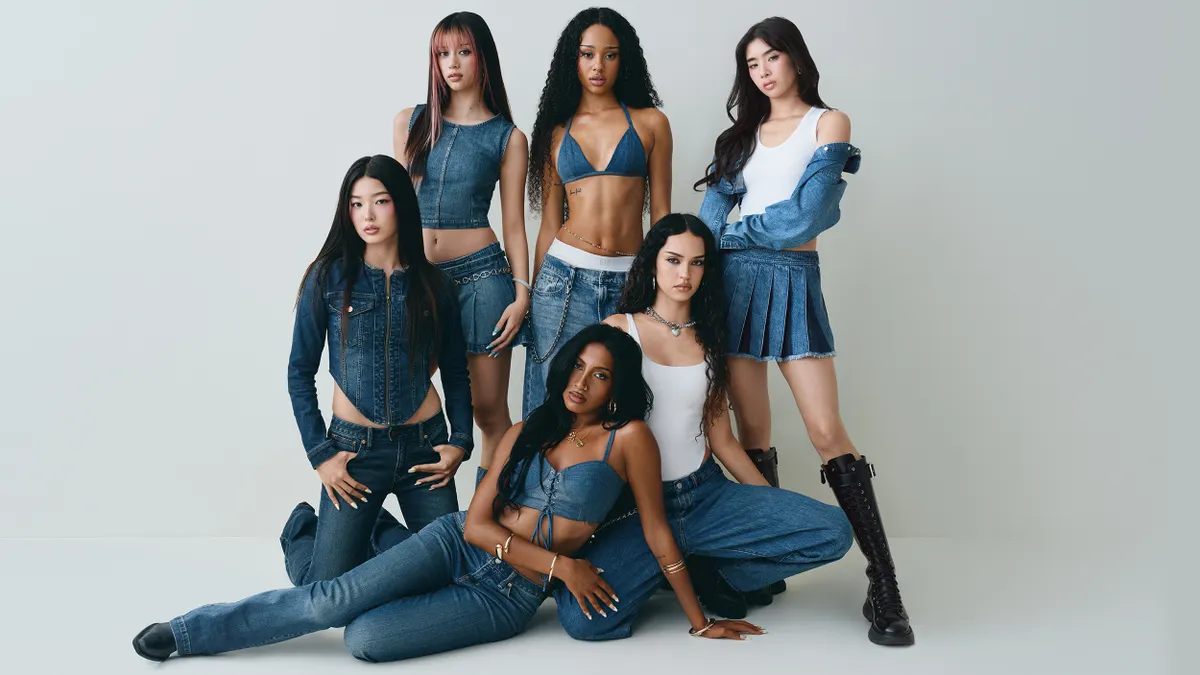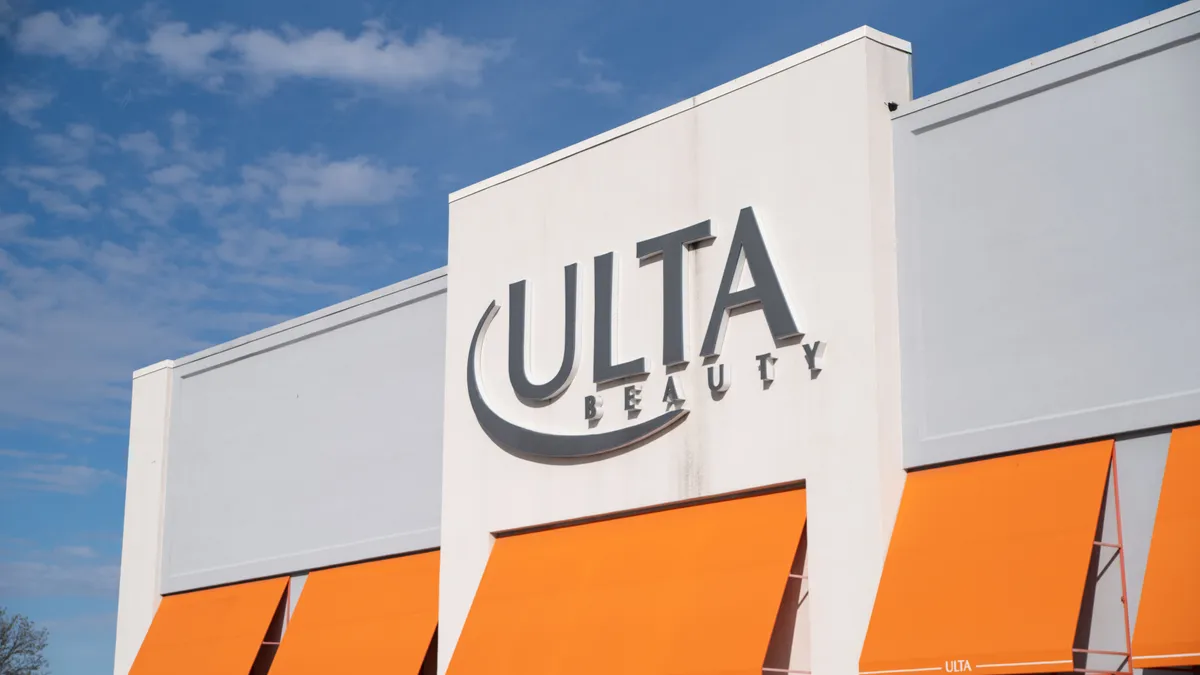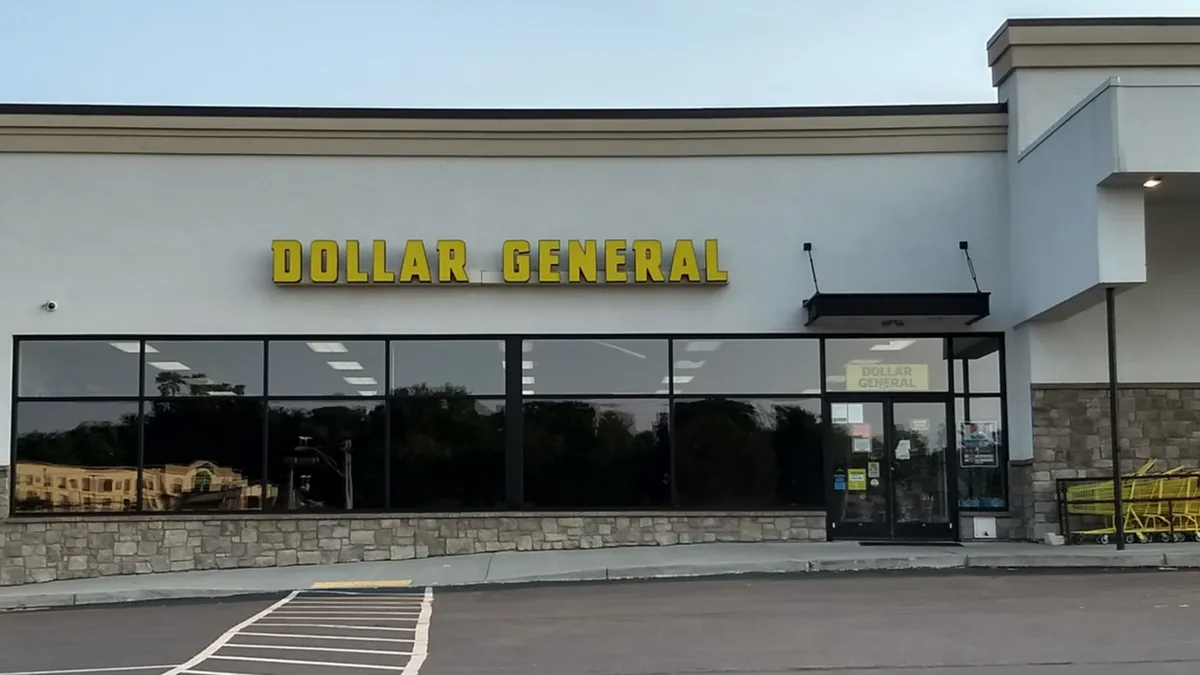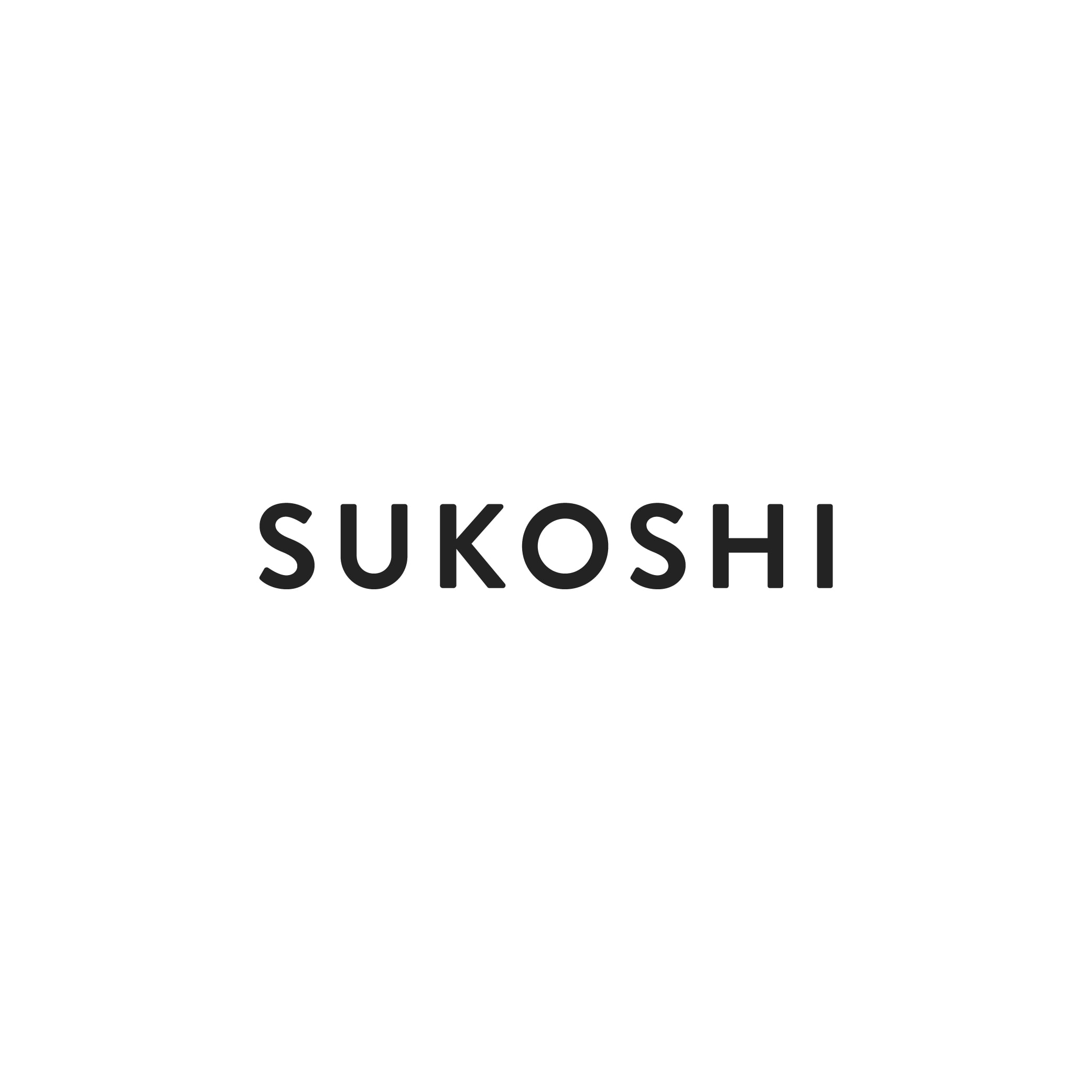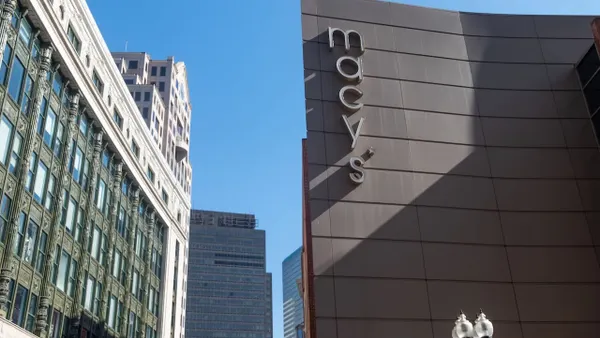Just outside Washington D.C., nestled in a quaint, upscale suburban neighborhood between a burger joint and historic Tinner Hill, stands a high rise apartment complex with one of Target's newest small-format shops at the base.
The approximately 26,000 square foot store soft launched Wednesday in Falls Church and is one of three such small-format stores to debut this week. Similar units also rolled out in Evanston, IL (near Northwestern's campus just north of Chicago) and Roslindale, MA (just outside of Boston). Target is slated to unveil 30 such stores in urban, suburban and college markets by the end of the year, and will have 130 by the end of 2019.
The mass merchant has steadily increased its investment in small-format stores thanks a $7 billion allocation announced by CEO Brian Cornell last March to rethink stores, digital experiences and the connection between the two. These smaller stores aim to cater to a shopping demographic looking for convenient, quick fill-in trips for essentials like beauty products, groceries, baby supplies, home decor and electronics, according to the company.
The layout and product assortment is meant to draw in busy, young professionals and families in the area.
Who specifically is the demographic? Matt Sargent, senior vice president of retail for Magid, believes the core customer for these stores is likely a couple between 28 and 35, with a young child. It's worth noting that it's also the core demographic for Amazon Prime. While Target may be taking a competitive step to close a gap with Amazon on convenience, that's not likely how it will win, Sargent told Retail Dive.
The big question is, "Can you do it as effectively as Amazon and as cheaply? That's tough, that's a high bar to set," Sargent said.
Target's best bet is category expertise — and differentiation is key — which means the store has to keep a close eye on data and adapt to the needs of the community, all the while bringing in something unique and convenient with a personal touch.
Stores as a brand advocate
Differentiating through brand partnerships and stylish private label has long been a core Target strategy, and it's no more apparent than at these small-format stores.
When you walk into the Falls Church store, the first aisle that grabs the attention is filled with home decor. Up front is the much-touted Hearth and Hand with Magnolia brand created by HGTV's Chip and Joanna Gaines. Cornell noted in recent weeks that it was a top seller over the holidays. That first section also includes private label Project 62, as well as a display of Casper pillows. Just last month, the retailer deepened ties with the direct to consumer brand by adding mattresses online and in select stores.
As you move through the rest of the store, Target's private label brands are everywhere.
In the center of the store is the apparel hub. Notably, the men's section is dominated by the new Goodfellow lifestyle brand, which offers messenger bags, hats, wallets, jackets and other men's casual attire. Women's apparel holds a limited selection of styles from other private label lines including young professional attire. Those brands include: A New Day, Who What Wear, Universal Threads and Joylab.The store also has a sparse selection of sandals, bags and accessories.
Moving into the kid's section, it's mostly Cat & Jack — a selling point for the young families in the community Target is hoping to tap into. There is also a sizable baby supply and food section.
Last year, Target made a commitment to roll out 12 new private label brands, and with some early successes, they've become critical points of differentiation. Because the stores are so small, replenishing inventory on a daily basis is essential, Beth Thiesfeldt, store leader of the Falls Church location, told Retail Dive during a tour.
Health, wellness and beauty are a big priority for the store, she said, which also includes a CVS pharmacy. The beauty offerings include call outs to trendy brands and products like facial masks.
Convenience, convenience, convenience
On a call with investors this week, Cornell announced an expansion of an experimental same-day delivery service in Manhattan to all five boroughs and in several other big markets, including the store in Virginia.
Using the new service, which launches Sunday at the Falls Church location, customers can pop in during a lunch break, for example, do their shopping and pay a flat fee of $7 to have those items delivered to their home. Deliveries are made within an eight mile radius of the store through (unnamed) third party services in the local area. This includes delivery of grocery items, which are kept in coolers at the store until the delivery is made.
While the company's acquisition of same-day delivery startup Shipt spurred Cornell this week to announce a nationwide program offering free two-day delivery without a membership requirement for orders at least $35, same-day delivery is only available for purchases made in store at the Virginia location, and not when ordering from a mobile phone or computer.
The same-day delivery service offered is certainly one way to drive in-store traffic, Sargent said, but he wonders how many people wouldn't just take the items with them immediately.
"The least roadblocks the better," he said. "I would be concerned if they are making this offering, but there are strings attached how customers would react."
The store also includes Order Pickup for online orders, now a staple at Target stores.
Is grab and go the key to grocery?
At the Falls Church location, 25% of the store is dedicated to grocery, Thiesfeldt said. That includes a small display of fresh food — like fruit and vegetables — as well as shelved food, wine and beer, frozen food and grab and go sandwiches, salads and other items.
Grocery is a huge priority for the store, Thiesfeldt said. Specifically, she thinks grab and go will be especially popular, considering the makeup of young professionals that live in the building or work in the surrounding area.
These small formats may tip the scale on grocery for Target, which has long struggled with issues of spoilage in other stores.
"Target has struggled with big-box grocery," Sargent said. "It hasn't taken off in the way they hoped it would, and I think — knowing there's a huge overlap with Trader Joe's and Whole Foods customers when they're looking at grocery — this right-sizes the assortment and aligns their customers' needs."
While a tough market with razor thin margins, grocery is also a high frequency category that has the potential to drive more store visits, Ray Hartjen, director of marketing at RetailNext, told Retail Dive in an email.
"Paramount for the success of Target’s smaller format stores is to expand upon shoppers’ baskets with non-grocery items," he said. "While the stores might draw the grocery and prepared foods shopper, perhaps an entirely new shopper to the Target brand, their success will likely ultimately depend on the conversion of non-grocery products."
Weaving the community fabric
It's rare — if not entirely impossible — for a big-box store to make people feel like it cares about them or the community. There's nothing quaint about sprawling stores over 100,000 square feet, and they can easily emit a sterile, corporate distance.
With small format stores, Target is trying to change that image. In addition to a smaller presence, Target is also hoping to embed itself in the local community. The company will donate $6,000 in grants to three nonprofits all within a few blocks of the Falls Church location. The organizations selected all revolve around children.
One of the best things the store can do to fit into the community, is to make sure it's serving a purpose, and listening to customers that what certain brands or products that may not be initially offered.
Thiesfeldt said getting feedback will be essential, since the store won't get the assortment perfect the first time. After about 90 days, she'll report back to headquarters with what she's hearing from guests and employees, and potentially shift pieces of the assortment.
To Hartjen, that's a key part of making this all work. "Today, savvy retailers are flawlessly executing on delivering on the needs and values of consumers. Data, of course, plays a big role — give shoppers more of what they want, less of what they don’t want. And it’s not just about product, but about the shopping experience, as well, like lines and product availability. Smaller-format stores will likely take a page out of the convenience store playbook, and have very strict, formulaic guidelines for shelf space. To be successful, those must be data-driven decisions."
While Target is doubling down on the format, Mark Cohen, director of retail studies at Columbia University's Graduate School of Business, cautions that making the model work is easier said than done — just look at Walmart's retreat from express stores, he said.
"Target should get credit for what they are doing here, but only if they have a mid- to longer-term strategy that will enable them to make money at this," he said. "Otherwise it's another Target Canada escapade in the making."
Testing and experimenting is a big part of the process, but perhaps most important is Target's overall message with the build out of these stores — that relationships with customers should be more than transactional.







